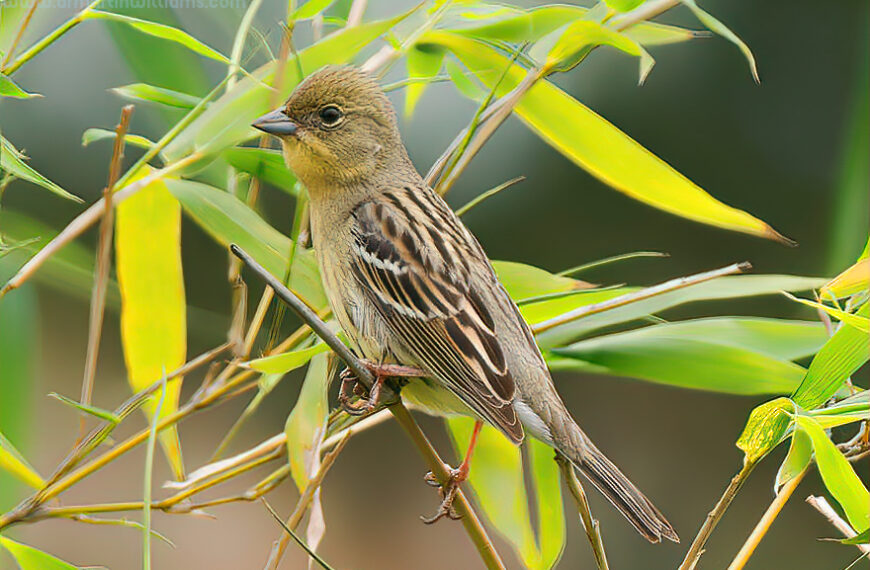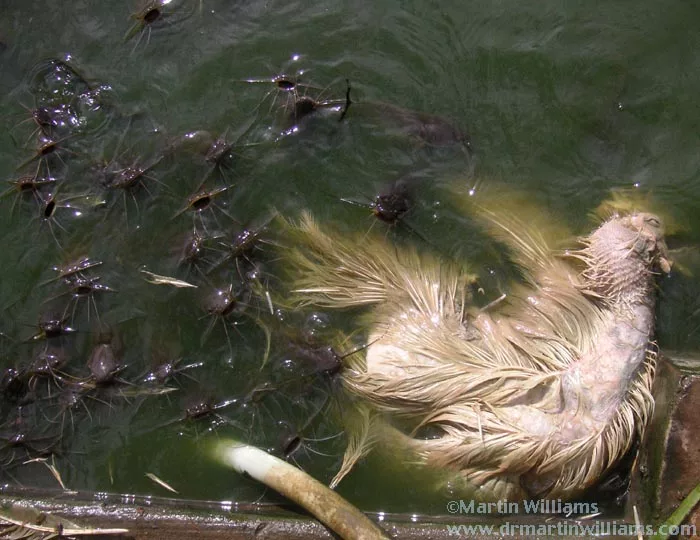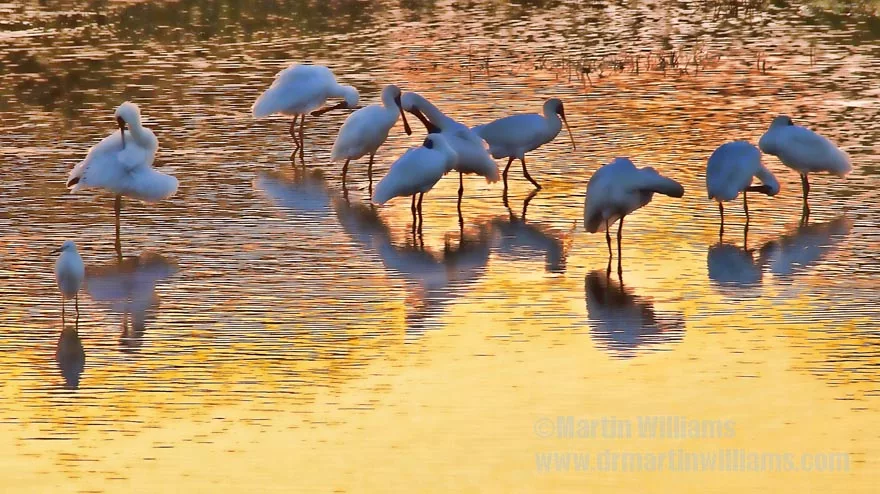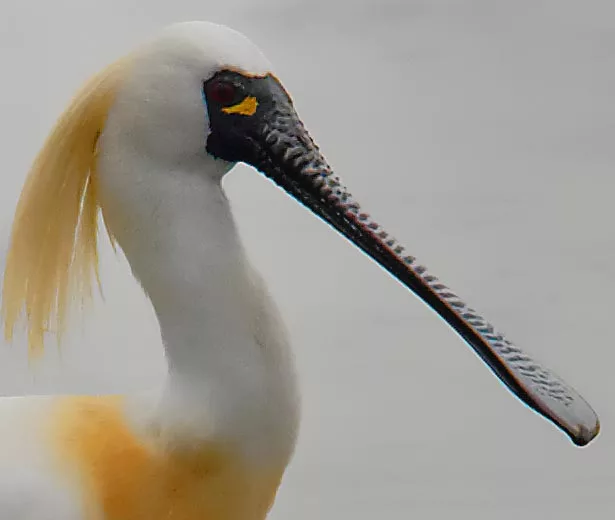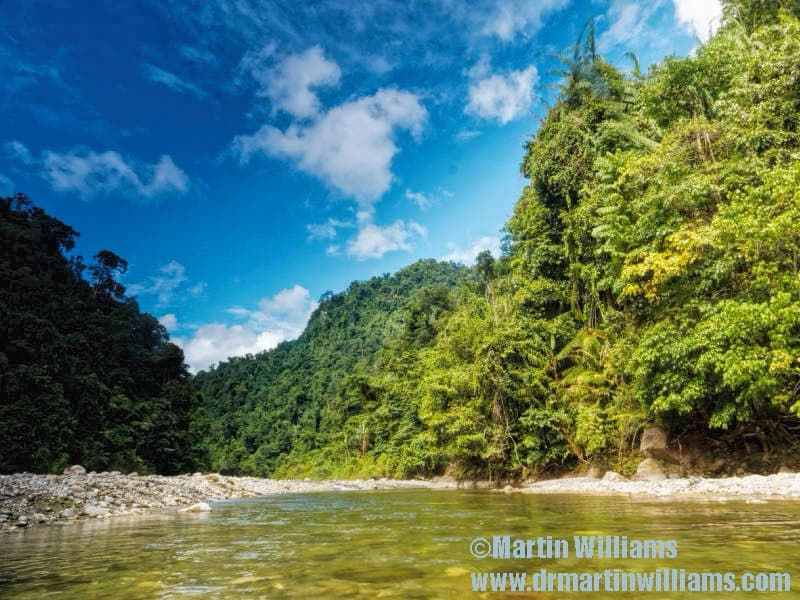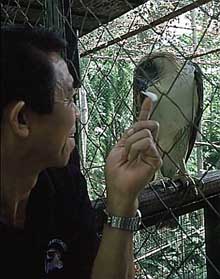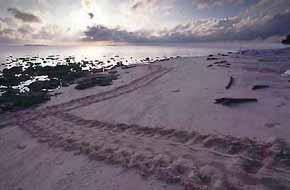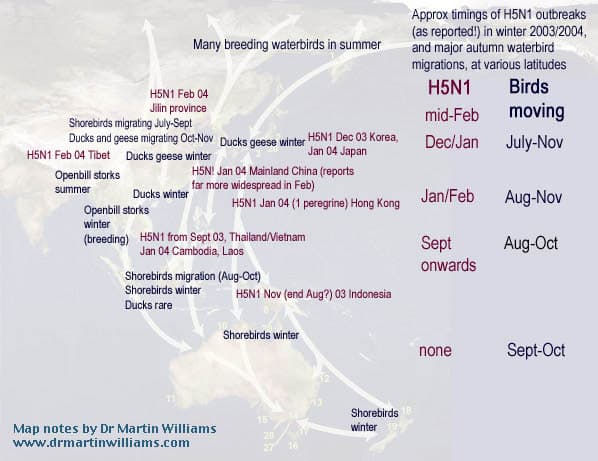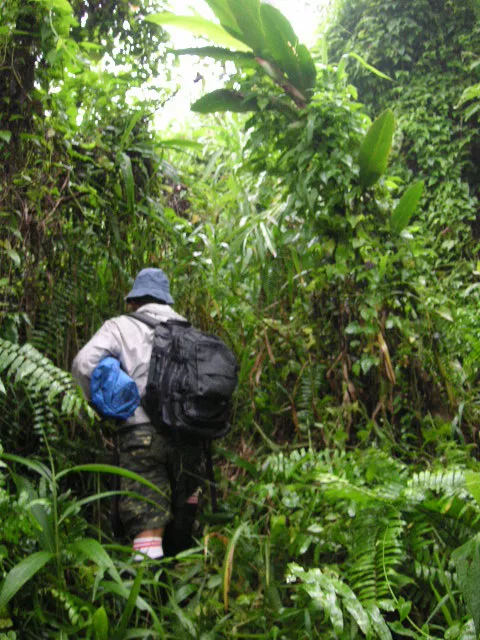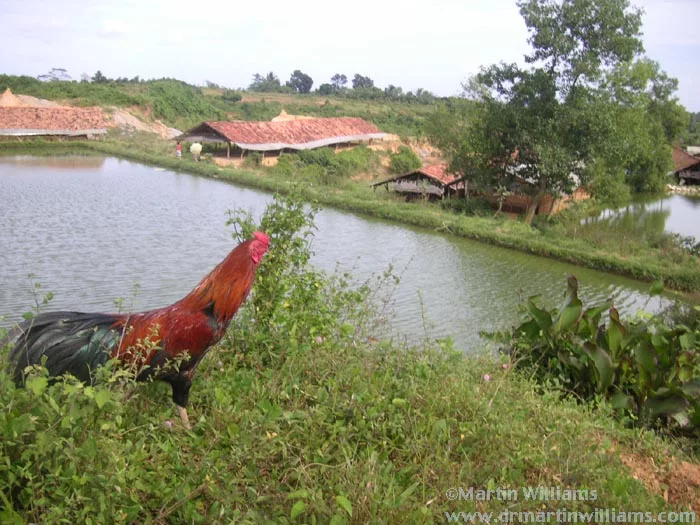Picture approaching Hong Kong from the southwest, roughly following the flight paths typical of spring migrants. Rather than aim for the city proper, take a route that leads in from over the South China Sea, passes rocky islands and, with Macau to the west, Lantau Island to the east, crosses the gaping mouth of the Pearl River. Drop down, angle right between hilly promontories, and you enter a bay bordering mainland China and Hong Kong.
This bay—Deep Bay—is one of the most important wetlands in Asia, a spring pitstop for tens of thousands of shorebirds, winter home to important numbers of cormorants, ducks, gulls and other waterbirds. Though a seemingly unremarkable expanse of silty water in its outer reaches, the bay is shallow to the east (it makes a deep indentation in the coastline), and low tide exposes mudflats that fairly teem with worms, shellfish, crabs and the like. In places, mangroves cluster along the tideline; beyond them are the shrimp ponds, fish ponds, lagoons landscaped for birds, reedbeds and groves of trees that help sustain the diversity of life in the Deep Bay wetland.
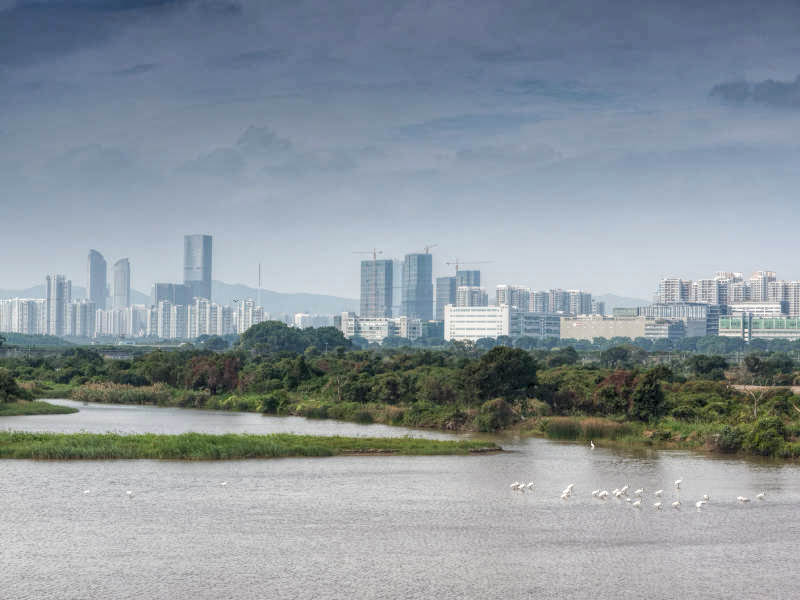
There are also apartment blocks, houses, factories, theme parks, highways, and a plethora of sites where construction schemes are underway or planned. A haven for wildlife today, the Deep Bay ecosystem is facing a multitude of threats stemming from urbanisation.
Countering the threats are two nature reserves, and various laws and regulations aimed at restricting developments, controlling hunting and reducing pollution. Even the border plays its part: access to the southern shore is restricted, and mangroves flourish outside the fence built to deter illegal immigrants.
The conservation measures began in the 1970s, which also saw the onset of development. When suburb-like Fairview Park was being built a little south of Mai Po, a village beside shrimp ponds and mangroves, two local birdwatchers became concerned that residents might roam the ponds and disturb the wildlife. They petitioned the Hong Kong government, which declared the Mai Po area a site of special scientific interest.
In 1985, Mai Po became a nature reserve, managed by the World Wide Fund for Nature Hong Kong. Across the bay, another reserve had been established a year earlier, at Futien. But Futien was long regarded as little more than a place for mangrove trees, and few management initiatives were taken save the planting and nurture of saplings. Mai Po, by contrast, has been transformed into a world class nature reserve.
Mai Po in winter
Stroll into Mai Po on a fine winter’s day. The path from the car park leads by some of the fishponds that occupy large tracts of land fringing Deep Bay. Once rated as poor for wildlife, fish ponds are now recognised as an important component of the wetland. When freshly drained for cleaning, they attract gangs of egrets and pond herons for whom fish stranded in puddles make easy pickings. Commonplace here, these birds can be tough to find across the border.
Beyond a hut where entry permits are checked, the path follows a line of casuarina trees. Here, noisy black-necked starlings are easily seen. Other songbirds are more furtive. Manchurian bush-warblers announce their presence with soft churrs, but are hard to spot in the undergrowth. More elusive still are Styan’s grasshopper warblers; it is only through studies using mist nets that they have been shown to be regular visitors to Mai Po, their only known wintering ground.
Off to the right, a three-storey hide overlooks a lagoon amongst an expanse of reedbeds. Egrets and herons seem fond of loafing beside this, on a mound of mud that was scooped from the lagoon. Sometimes, they are joined by black-faced spoonbills.
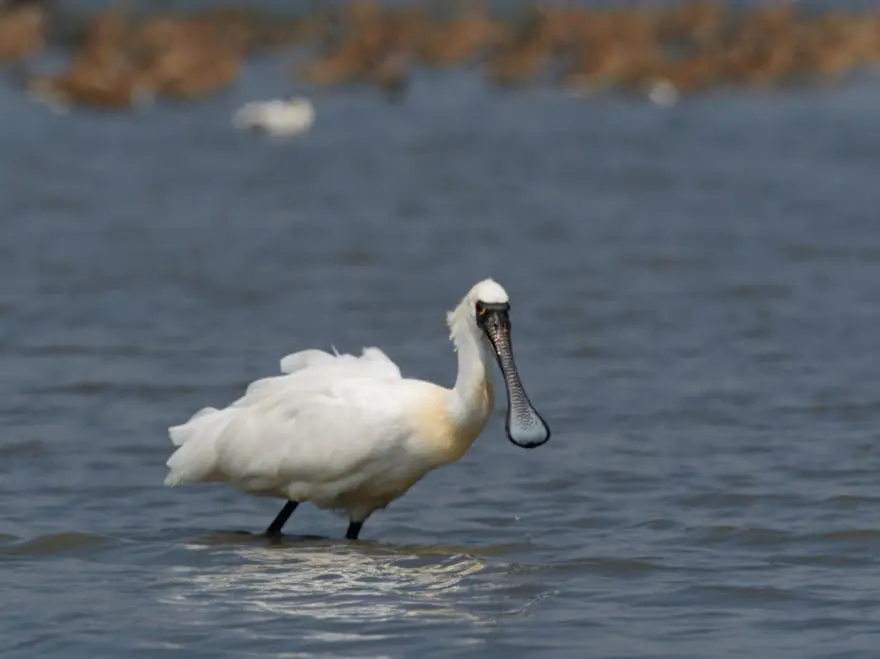
The spoonbills are global rarities, numbering perhaps 550 in all [when I wrote the article; over 6000 by 2022]. They are known to breed only in North and South Korea, and to regularly spend winter at just three sites, in Taiwan, Vietnam, and Deep Bay, where numbers have crept up recently, reaching 123 in [January] this year. But however rare, the spoonbills are not always the most exciting birds to watch. When resting—which they seem to do for a lot of the time—they may just stand stock still, or sleep with those long, spatulate bills tucked under wings, black face patches only just showing.
Update, April 2024: the global population of Black-faced Spoonbill has reached over 6900, but Deep Bay has failed to keep pace with the increase, with around 300 this past winter: Black-faced Spoonbill global population stabilizes while Deep Bay proportion hits second lowest in history.
The marshes harbour other notable wildlife: a leopard cat once sat out in front of the “tower hide”; mongooses are occasionally seen. But with mammal sightings infrequent, it is Mai Po’s birdlife that most appeals to visitors.
Back on the main path again, it is worth glancing up at times, to check for birds of prey. Black kites are common, but you can see them pretty much anywhere in Hong Kong. More interesting are the eagles found in winter—imperials with neat, almost slender profiles; stockier spotteds. They seem big when soaring with kites, yet are belittled by scarcer black vultures, which are hulking brutes like flying bedspreads.
The path reaches a visitor centre with displays dating from Mai Po’s early days. Beside this is a newer captive waterfowl collection—offering easy birdwatching if the eagles, spoonbills and others were absent or distant. But for what is invariably the best of Mai Po’s winter bird show, head for the boardwalk hide. [Hah, those were the days! In recent winters, it has been harder to see this spectacle because of the muflats rising, and most winter daytime high tides not coming close to the hides.]
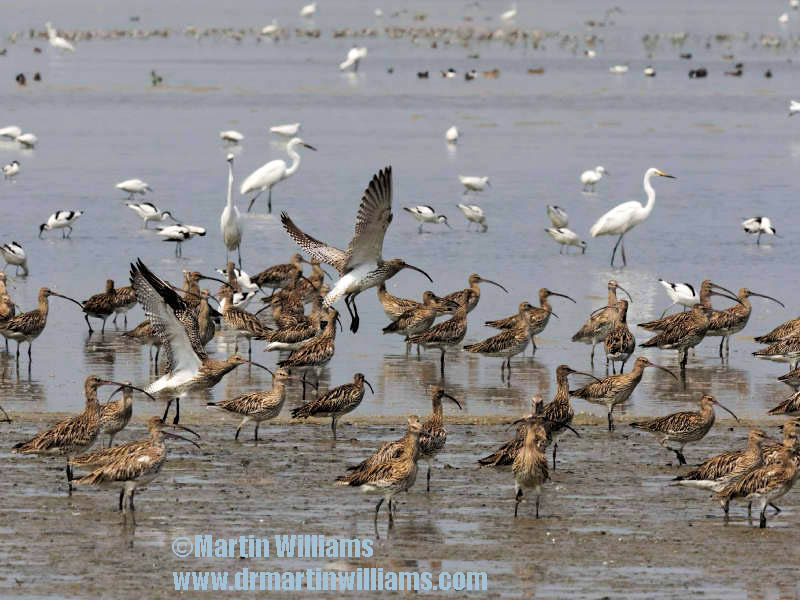
The hide is though a gate in the border fence, and at the end of a wooden walkway floating on a channel through the mangroves. Set where mangroves give way to mud, it provides a front row seat for one of Asia’s finest bird spectacles. With the tide rising but yet to peak, a broad expanse of mud lies in front of the hide. Beyond this is open water, then the Chinese shoreline, where replicas of the pyramids and the Eiffel Tower form a curious backdrop for a birdwatching session.
A quick scan of the mud reveals gulls by the thousand, and small shorebirds that are still busy feeding even as a flock of curlew has decided it is time to rest. A group of Dalmatian pelicans draws attention; they stand on the mud, white and massive. Some of the gulls are patrolling the mudflats, at times dropping suddenly to snatch at crabs. These are Saunders’ gulls—with only 2000-3000 known [over 3000 in 2005], they are endangered, and Deep Bay is one of their main winter sites.
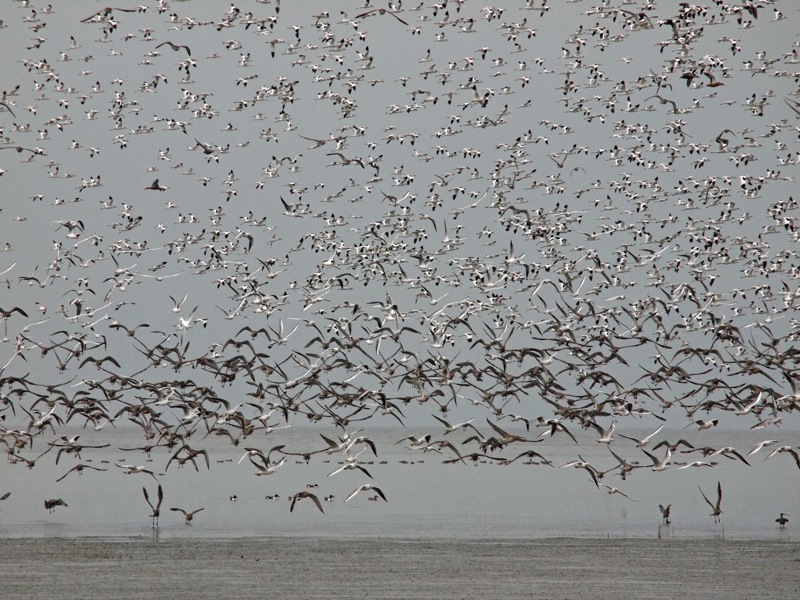
Suddenly, a great flock of gulls takes to the air, wheeling in a great swarm before settling again. Ducks are floating in on the tide, dabbling in the shallows. Avocets walk busily between them, sweeping upturned bills from side to side. Flights of cormorants arrive from further out in the bay, land over newly covered flats, and set to work diving and catching fish. The pelicans are content to let the rising waters reach them, before sailing across the bay, bills at the ready for scooping fish.
Shorebirds and gulls are squeezed ever tighter between sea and mangroves. Some leave, to find roosting sites. A dense, raucous pack assembles right in front of the hide. Then the last of the gulls fly off, leaving only a few ducks sifting through the murky water.
Mai Po in spring
Bar occasional brief visits by groups touring the reserve, the boardwalk hide is often virtually empty during showtime in winter. But in spring, it can be full to bursting. Birdwatchers from Britain, Scandinavia, the US, Canada, Australia, Japan and elsewhere bunch onto the bench; latecomers stand behind them, shifting position to point tripod-mounted telescopes and telephoto lenses on still and video cameras through gaps between people’s heads. The main show is due as the tide uncovers fresh mud; to be sure of a good seat, some people arrive a couple of hours early (local birders can now avoid the scrum, by using their own, nearby hide).
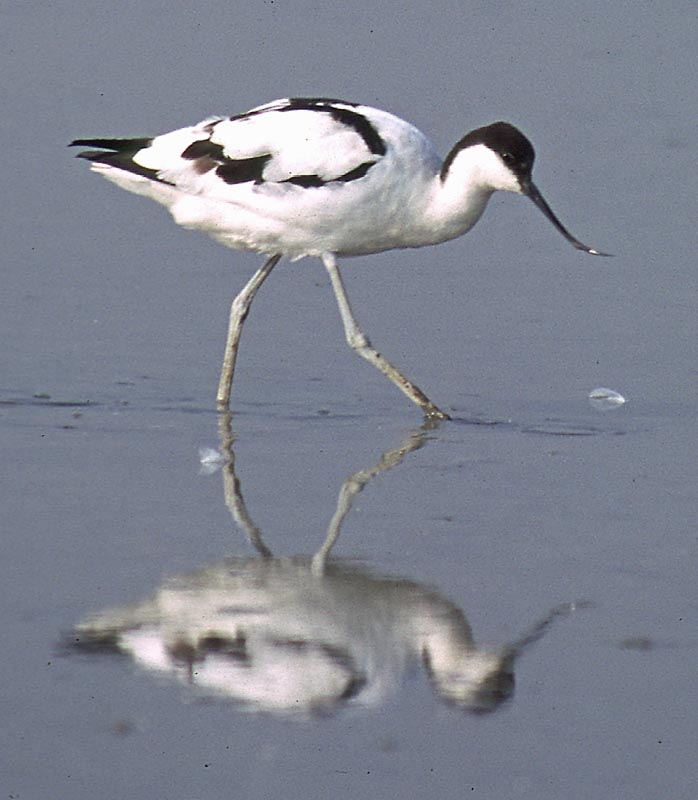
There is little to see while the tide is high. Maybe there are some lingering gulls, though most have already gone north. There might be avocets, bobbing about like little ducks. But interest soon centres on the water depth—is the tide really going out?; how long to wait now?
Birds are impatient for mud too. A party of greenshank flies low over the water, circles, almost touches down, then skips over the mangroves: still too deep.
There are more flypasts by greenshank, mixed with spotted redshank and marsh sandpipers. At last, one group touches down near the mangroves. Black-tailed godwits are quick to join them. “Asian dowitcher,” someone announces. Directions are passed along for finding this bird, which resembles a godwit, but has a straight, blunt-ended bill, and is a world rarity—it’s one of the species that makes Mai Po in spring a magnet for shorebird enthusiasts.
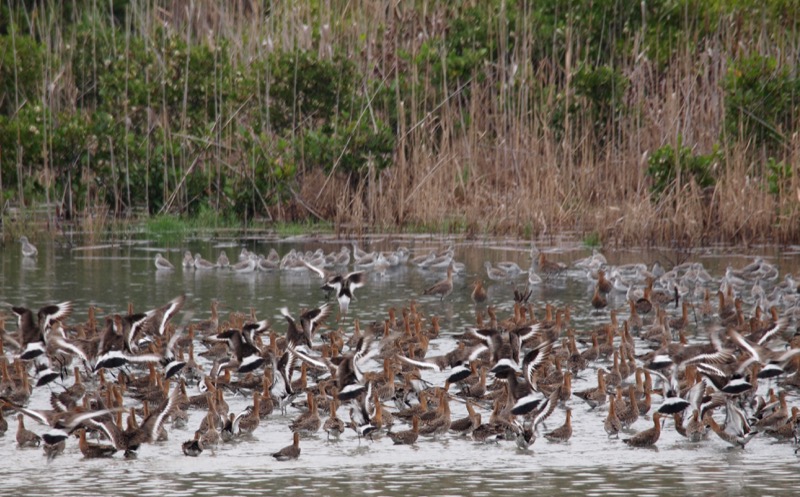
Godwit and greenshank flocks pile in to the shallowest stretches. They bustle about, probing hungrily. Mud begins showing. There is a whoosh of wings as a great flock of sandpipers rushes past the hide. They drop down too. More arrive. The scene in front of the hide has been swiftly transformed. Godwits, curlew, greenshank, redshanks (two species), dowitchers, red and great knots, greater sandplovers, immaculate lesser sandplovers, golden plovers—some dowdy, some splendid gold and black— red-necked stints, curlew sandpipers, marsh sandpipers and other shorebirds throng the mud and tideline. They run hither and thither, or suddently fly up en masse, then land nearer the retreating water.
The birdwatchers are almost as busy as the birds. Some are checking field guides as they try to identify the various species. The more hard-core types peer intently through telescopes, methodically sorting through the flocks, and occasionally telling neighbours the locations of species that might be only vagrants to Europe or North America but are common at Mai Po. Then come the words most people have been waiting for: “I’ve got a spoon-billed sand!”
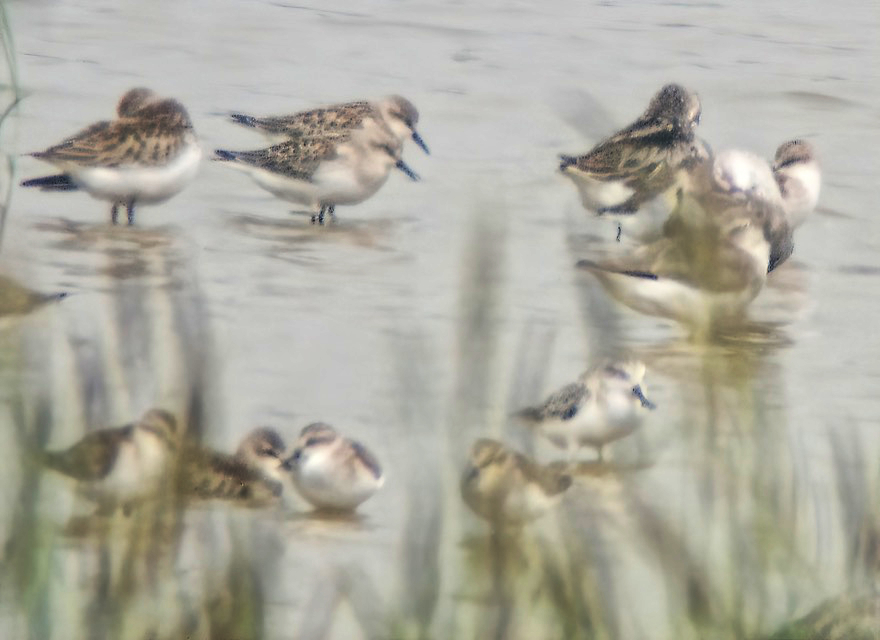
All attention suddenly switches to finding this one, tiny shorebird. The finder tries explaining where it is—maybe with red-necked stints, left of the Eiffel Tower. “Oh yes, I’ve got it,” a couple of people say, and they too start giving directions. More find the sandpiper—which would look a dead ringer for a stint, were it not for its bill being flattened at the tip, a feature unique amongst shorebirds. This, together with the species’ great rarity, makes spoon-billed sandpiper rank high on the wish lists of globe-trotting birdwatchers—and the easiest destination to visit and stand a high chance of seeing one is Mai Po.
The hide fairly buzzes with excitement as the star of the show performs right on cue. The last plaintive cries of “I can’t find it” are silenced; some telescopes are even turned elsewhere, perhaps to hunt for another rarity, Nordmann’s greenshank. The flocks are up again, and wheel about before landing further away. Soon, they are so distant that even telescopes reveal little detail. The hide starts to empty, as a well satisfied crowd files back to the border fence and the ponds.
Or maybe not. Although the falling tide can produce classic birdwatching, the shorebirds can be frustrating as well, maybe arriving late, or proving flighty. All too often, there is a no-show by spoon-billed sandpiper—visiting birdwatchers might try the hide several times but fail to see one or, more cruelly, learn that one showed superbly on the day they opted to give Mai Po a miss.
Deep Bay needs friends
While serious birdwatchers can obtain permits for Mai Po, most of the 40,000 people who now visit annually are on organised tours. School parties dominate during the week, but weekend trips are so popular that they are booked well in advance. The tours are by no means just aimed at dedicated naturalists—one focuses on traditional ways of cultivating and harvesting shrimps, which are the highlight of an end-of-tour dinner.
Mai Po visits look set to remain carefully controlled. But there are plans for a wetland education centre at nearby Tin Shui Wai, allowing easy access to facilities including an observation tower overlooking mangroves and mudflats. With Futien aiming to initiate a school visit programme from the end of this year, this should boost the numbers of people who have experienced the Deep Bay wetland.
So, there should be more support for conservation measures, for stemming the tide of development that threatens to overrun ever more fishponds, and for tackling the pollution that sullies the water and may have lately decimated fish and invertebrates. Whether this will help spur the action needed to ensure the wetland survives battered but still vital, no one can yet say.
But Deep Bay needs friends. So too do the unglamorous crabs, the mongooses, the birds—those waterfowl that spent winter in the bay, like the shorebirds that passed through in spring, will return shortly. Since many other wetlands have been “reclaimed” or otherwise massively damaged, they depend on Deep Bay. Without it, they may have nowhere else to go.





